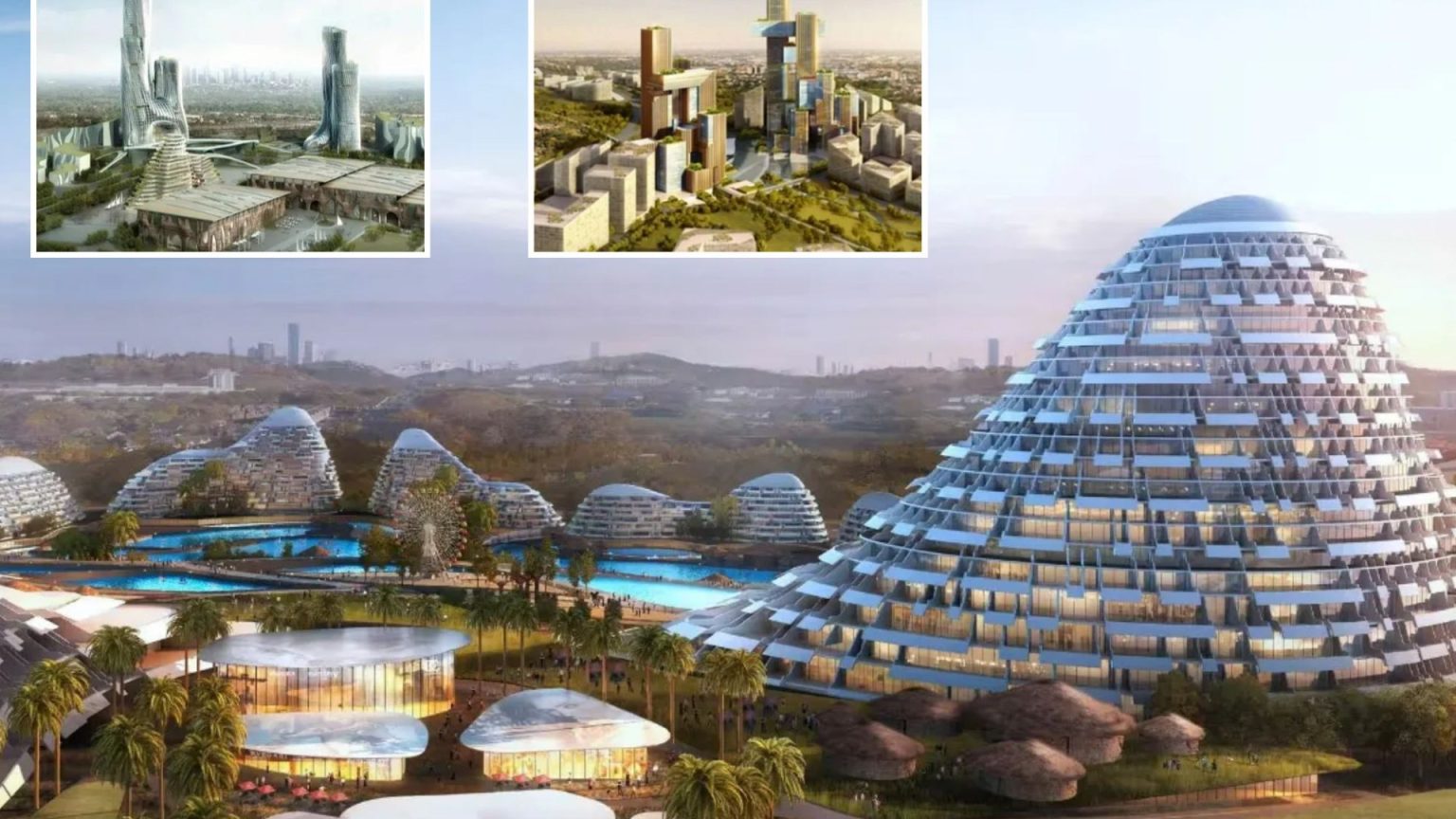The “New York of Africa,” a grandiose vision of a futuristic eco-city nestled in Modderfontein, South Africa, remains a ghost of its ambitious blueprint. Conceived by the Shanghai-based Zendai Group, the £4.2 billion project promised a dazzling blend of luxury and sustainability. Acquired in 2013, the 1,600-hectare site was earmarked for transformation into a vibrant hub, boasting 50,000 homes, 300,000 jobs, and a network of state-of-the-art amenities. Skyscrapers piercing the skyline, interspersed with verdant parks and linked to Johannesburg by a high-speed rail network, formed the crux of the developer’s vision. Zendai’s chairman, Dai Zhikang, boldly proclaimed it the future capital of Africa, rivaling global metropolises like New York and Hong Kong. Renowned consulting firms, Atkins and Arup, were enlisted to craft a masterplan for this ambitious undertaking.
However, this dream of urban utopia collided with the realities of local needs and priorities. The demand for affordable housing, a critical requirement from local authorities, clashed with Zendai’s focus on luxury residences for the affluent. This fundamental disagreement stalled the project for two years, ultimately leading to its abandonment. Today, Modderfontein remains sparsely populated, a stark contrast to the bustling metropolis envisioned by the developers. The site stands as a testament to the challenges of balancing ambitious development with the socio-economic realities of the local context.
This narrative of unfulfilled potential is echoed in other Chinese-backed projects across the globe. Forest City in Malaysia, another ambitious undertaking, stands as a stark example. Envisioned as a lavish resort city near Singapore, it now resembles a desolate ghost town. Despite the initial promise of opulent high-rises and villas, fueled by China’s real estate boom and Xi Jinping’s Belt and Road Initiative, only a fraction of the project has been realized. A handful of residents occupy the towering structures, while the majority remain empty, a testament to the perils of unchecked development and market miscalculations.
Further afield, in China’s Zhejiang province, lies Tianducheng, a replica of Paris complete with its own Eiffel Tower and Champs-Élysées. Built in 2007 at a cost of £1 billion, this “Paris of the East” initially struggled to attract residents. Its remote location contributed to its slow growth, leaving the meticulously crafted Parisian streets and architecture largely unoccupied. However, its unique aesthetic appeal eventually drew tourists and wedding photographers, gradually increasing its population. While Tianducheng exemplifies China’s penchant for “duplitecture,” it also highlights the complex interplay between urban planning, economic realities, and evolving social dynamics.
These examples, from the abandoned “New York of Africa” to the sparsely populated Forest City and the slowly burgeoning Tianducheng, underscore the complexities of large-scale urban development. They highlight the critical importance of aligning ambitious visions with local needs, market demands, and sustainable growth strategies. The failure of Modderfontein serves as a cautionary tale, emphasizing the need for developers to engage with local communities and prioritize social equity alongside economic aspirations.
The contrasting fortunes of these projects offer valuable lessons for future urban development endeavors. They illuminate the importance of conducting thorough feasibility studies, understanding local market dynamics, and incorporating community needs into project planning. Furthermore, they underscore the necessity of responsible development practices that prioritize long-term sustainability over short-term gains. The stories of these “ghost cities” serve as a stark reminder that grand visions, however compelling, must be grounded in pragmatic considerations and a commitment to inclusive growth.




